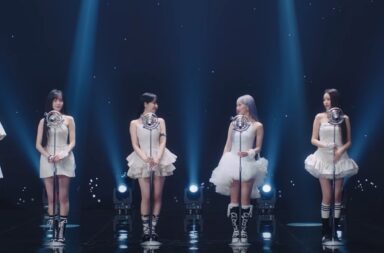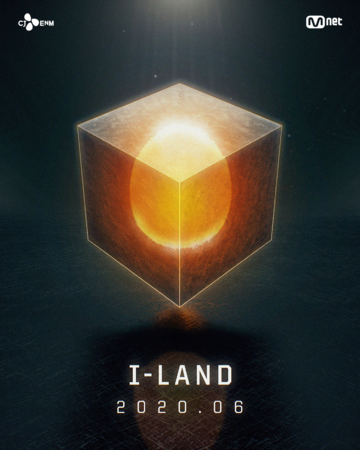
Considering that the seven members of Enhypen survived the Hunger Games-esque I-Land, the sinister edge of their debut MV “Given-Taken” comes with very little surprise. In the first half of the cutthroat competition, trainees initially chose who would enter the massive I-Land and the sparse Ground. Until the sixth episode, they were divided between these two levels, where the trainees needed to work together but also had to fight for their own individual position as well.
“Given-Taken” captures an ambitious concept of transformation that is filtered through a supernatural lens, compiling classic horror elements into a twisting narrative. This idea of transformation parallels the seven members’ journeys from being trainees under an international spotlight through I-Land to officially debuting with high expectations resting on their shoulders.
The horror concept is clear as soon as the MV shows Enhypen together. This opening take is paired with the light chimes of the song’s beginning as the members are shown in Victorian-era clothing, frozen in the middle of the living room of a creepy old house. Although nothing is confirmed, the MV hints that they may be in a home for “gifted” children or the like considering the supernatural powers later revealed.
There are bathroom walls that bleed in the first shot of Sunghoon, a trope that appears in other horror movies. In “Given-Taken,” “FATE” is spelled out as the figure skater-turned-idol sits on the edge of a metal bathtub. Youngest Ni-ki sings “red blood” during the bridge alongside center Heeseung; yet, the maknae’s loose intonation and the autotune used obscures the two words. If one is unaware that it is “red blood” he sings, the words arguably sound like “redrum,” which references The Shining.
Sunoo, who is known for his cute and energetic nature, demonstrates his ability to also pull off dark concepts. His set is a dark and almost abandoned nursery, and he is often seen clutching a teddy bear, adding to the unsettling feeling. There are old video reels of the seven laughing and playing together throughout the MV accompanied by children singing in the background. While these are evidence of innocence, the sequences are often disquieting because of how out of place these moments are. There are other horrors that lurk under the surface.
The clearest imagery is that surrounding the vampire narrative. However, even those touches are subtle enough to not ourightly answer any questions viewers probably have. Some of the lyrics in “Given-Taken” help build the larger narrative of the MV with the lines “my red eyes” and “my white fangs” in the chorus.
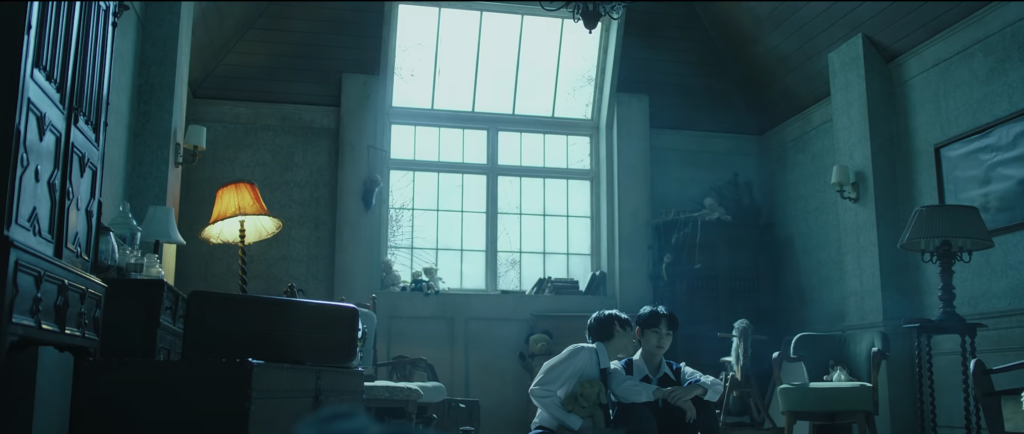
The two vampires are Sunoo — the original one — and leader Jungwon, the main focus of the MV, as he was bitten by Sunoo. Sunghoon might be a vampire, but his hand erupts into flames when he is still in the room with the bathtub, not when he is exposed to the sun. Ni-ki can levitate, while Heeseung and Jake’s abilities are unclear. The former shoves a pill into his mouth that appears to make him choke, but it is uncertain how this moment fits into the wider narrative. Since there are quick cuts of old photos edged with electric colors after he takes this pill, his affliction may be related to memories.
Jake is usually shown writhing in agony on the empty dining room tables. Jay, meanwhile, is the only member who rarely has any solo shots. The first time viewers see him in the MV, he faces Jake to lead into Sunghoon’s set with the bathtub. Jay has no clear backstory nor a satisfactory amount of screen time, which is a critical downside of “Given-Taken.”
On the other hand, the central narrative follows Jungwon. The first supernatural clue comes with Jungwon’s bloody nose at the opening, indicating an intense use of psychic powers. The story does not return to this modern world setting until the middle of the MV when it circles back to him after he has wiped his nose. Thus, the few minutes in between the two shots may be a venture into his memory of becoming a vampire. Somehow, although it is not entirely clear, the half-destroyed towering structure he stands in front of in the desert has a significant part in this story.
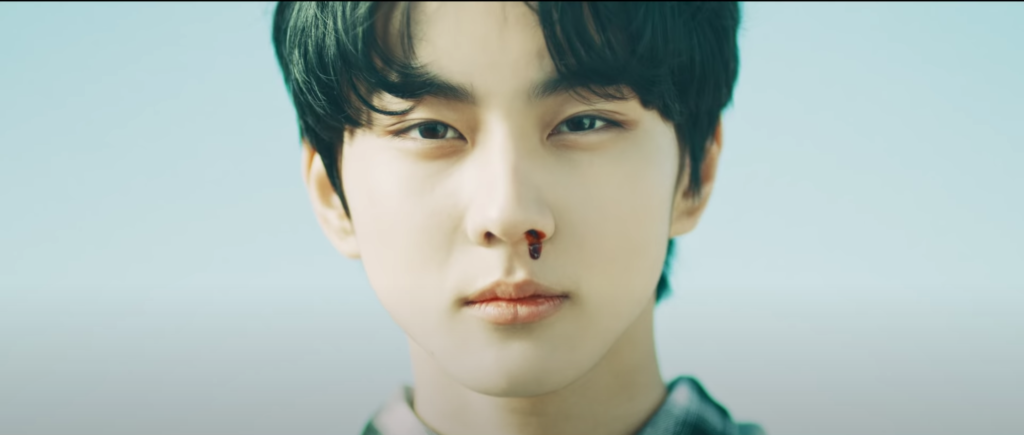
It is known, however, that in the past when the seven lived in the Victorian mansion, Sunoo bit Jungwon as the young leader dozed off in the nursery, causing the latter to turn into a vampire. Closer to the three-minute mark, there is a quick shot of Sunoo’s profile when he throws his head back screaming, and the slight shadow of the incisor is just barely noticeable in his silhouette. Besides the definite final shot of the MV, it is further solidified that Jungwon is a vampire through more subtle hints, such as when smoke appears around him in the desert and when his body starts disintegrating under the sun.
The journey in “Given-Taken” rushes viewers along a dizzying adventure that forces one to piece together the chronology of the timelines present. Although Jungwon is first seen in modern day clothing during the desert scenes, there is an obvious time jump to the Victorian era and the haunted house the seven live in. Since vampires are immortal, it makes sense that the leader and Sunoo have survived, but the other five also appear in front of the tall structure. Whatever powers they must have, immortality must be a component.
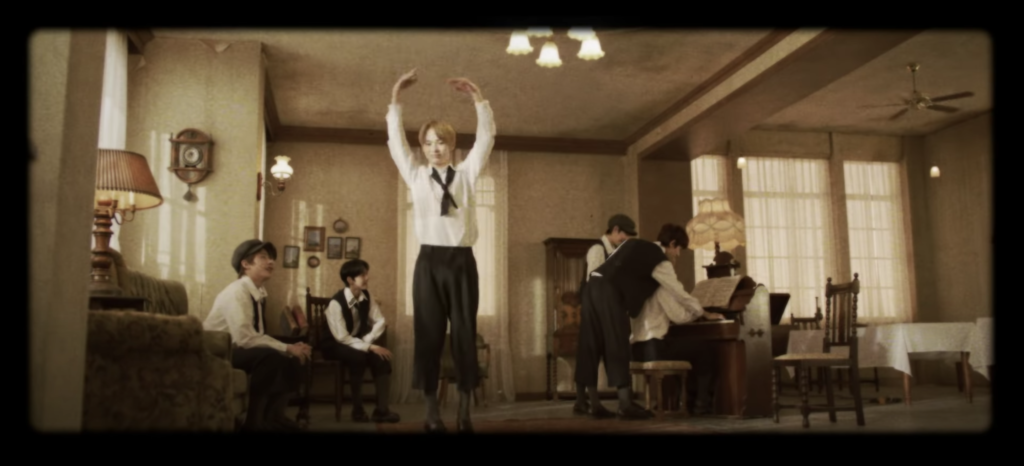
The cooler blue tinted sequences indicate the moments surrounding Jungwon becoming a vampire when he lived in the mansion. Spectators are in his past but experiencing those memories as if they were his present. Meanwhile, the more vintage aesthetics are reserved for warm recollections of the past when the seven are all together. There are little signs of internal or external struggle as they laugh in the living room and gather around a table in the eating area. A mixture of cool and warm exist in the contemporary day desert scenes, bridging their earlier moments of friendship and the colder palette marking unsettling transformations.
As this MV demonstrates, Enhypen experiences both isolation and togetherness; sometimes, these ideas can coexist in reality. The namesake of Enhypen and their simple logo—the hyphen—can be applied to the tension between isolation and togetherness in “Given-Taken.” The hyphen forms something new through the connection of two independent elements; however, if separated again, they can stand on their own. Furthermore, visually, the Enhypen logo appears in the MV: the white tablecloths in the dining room are stark against the darker space. They are the center of a place of camaraderie, but this room is also one of isolation, as seen with Heeseung and Jake’s solo scenes.

This idea of connection but simultaneous separation is clear in a few sequences. Jungwon is physically separated from the other six in the Victorian set when his hand suddenly appears on the cloudy window. He peers into the living room, watching the rest of Enhypen carry on with their everyday lives. A similar example of isolation occurs at the conclusion of the MV as Jungwon reveals his incisor through a smirk.
The sequence begins with a long shot of the living room filled with the members of Enhypen, not unlike the one that opens the narrative. Amidst the background music of children singing and the warm aesthetic, the camera cuts to a medium shot of Jungwon sitting on a chair and holding his knees close to his chest. The rest are eliminated from the frame, isolating Jungwon in this concrete revelation of his transformation into a vampire, although he technically is still surrounded by the others.
Sunoo was the first to be isolated in the group. After the first shot of the seven of them at the beginning of the MV, the other six disappear and Sunoo is left sitting in the living room, alone. Heeseung also experiences the duality of being separated while together. He kneels on the white tablecloth surrounded by his teammates. However, they all stare blankly ahead, frozen in their seats at the table. There is no connection, no recognition even towards the person sitting right in front of them.
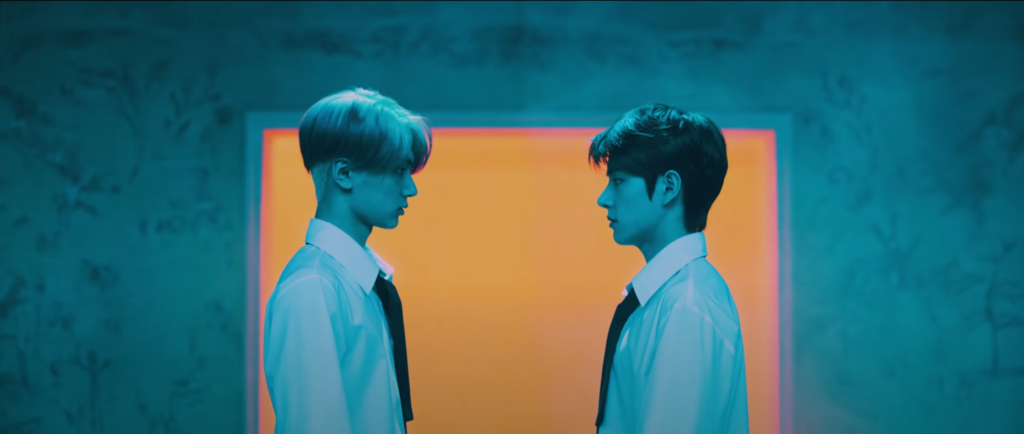
Jay and Jake’s scene at the beginning of the MV features a similar blankness. They stand face-to-face; yet, they make no indication that they know nor that they want to interact directly with one another. Tension between togetherness and solitude is palatable.
The tower structure that first appears in the flashing of red lights on large screens of one of the choreography sets seems to have a critical role in the MV. What exactly it is and what it does is uncertain. The tower is very different from the I-Land building (it is a bit worn compared to the formidable stability of the architecture of I-Land) but its looming nature cannot help but be associated with the one from the show.
Although the exact position of the structure within the narrative of “Given-Taken” is up for debate, it does seem to mark a transition. Once Enhypen release their invisible arrows into the tower, it is set alight, spurring a drastic and immediate transformation from daytime to darkness as well as from brown eyes to red ones.
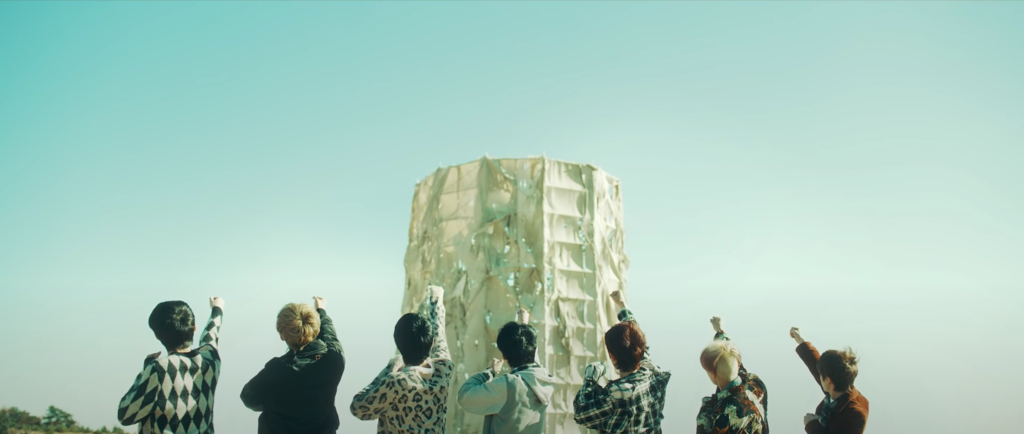
The other pieces of evidence of transitions, such as Jungwon emerging as a vampire and Ni-ki fighting to free himself from his chains, were much more subtle in comparison. The tower clearly is the site for explicit transformation but all of the information about it is murky at best.
While intriguing for those familiar with the members of Enhypen from I-Land, “Given-Taken” leaves many questions in its wake: what is the role of the structure they set alight in the modern day? Are any of the seven aware of the others’ supernatural abilities (besides Sunoo with Jungwon)? Is the story of how they all ended up living in that crumbling house ever going to be addressed?
However, the track definitely sticks, especially the “given or taken” part of the hook. It is more of a subdued debut, but the opening instrumentals grabs listeners’ attention and the chorus keeps it. For those who can untangle the narrative (at least somewhat), the MV enhances the song and its supernatural concept.
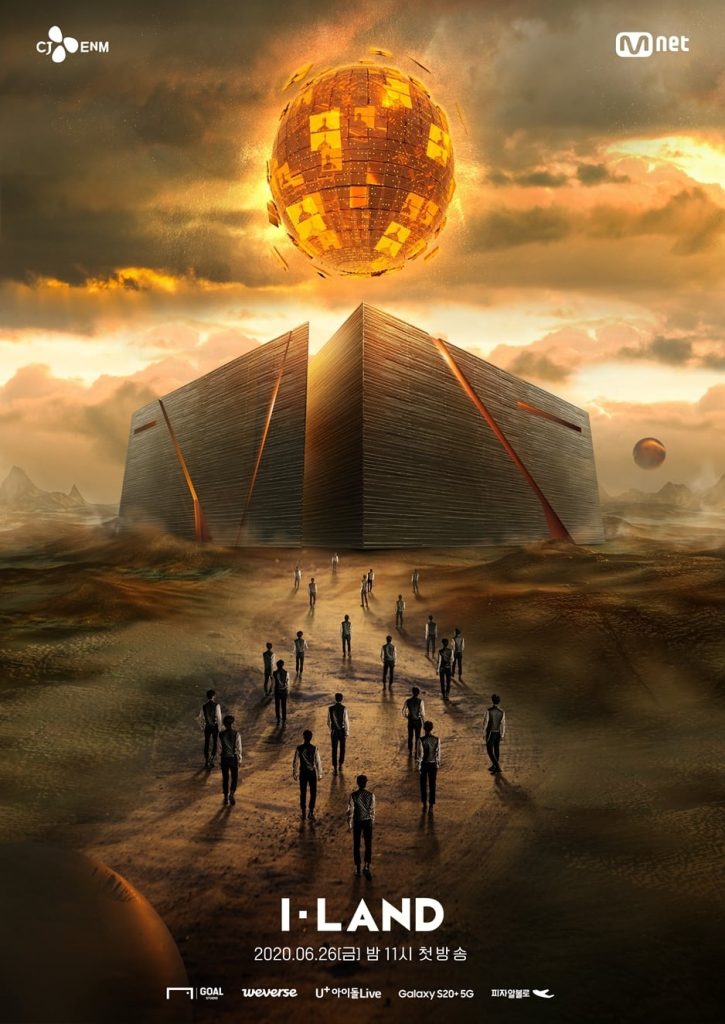
Furthermore, the choreography of “Given-Taken” is one that can be watched multiple times and features a host of memorable moments, including the climax when the members launch invisible arrows. However, the line distribution and screen time for Jay is disappointing, as he seems to be the only member who does not really have a “character” in the MV with a power or a backstory.
Through their debut, Enhypen confront their complicated feelings of whether they were given a spot in this group or if they had truly earned it through their own efforts. They question, “why me,” particularly in the lyrics “between being given and winning / left above the banner of proof.” The supernatural concept and thread of transformation in “Given-Taken” aligns with the members stepping into their new world of having officially debuted.
The story of “Given-Taken” definitely piques curiosity and follows one of the marks of a Big Hit group—a complex narrative that expands through multiple MVs, seen in BTS’ The Most Beautiful Moment in Life and Wings as well as in TXT’s releases. Enhypen executes a darker take on youth (the members’ ages range from 15 to 19 international age, and their leader is 16), weaving in supernatural and horror elements with a backdrop of a historical Victorian aesthetic that also jumps to the contemporary world.
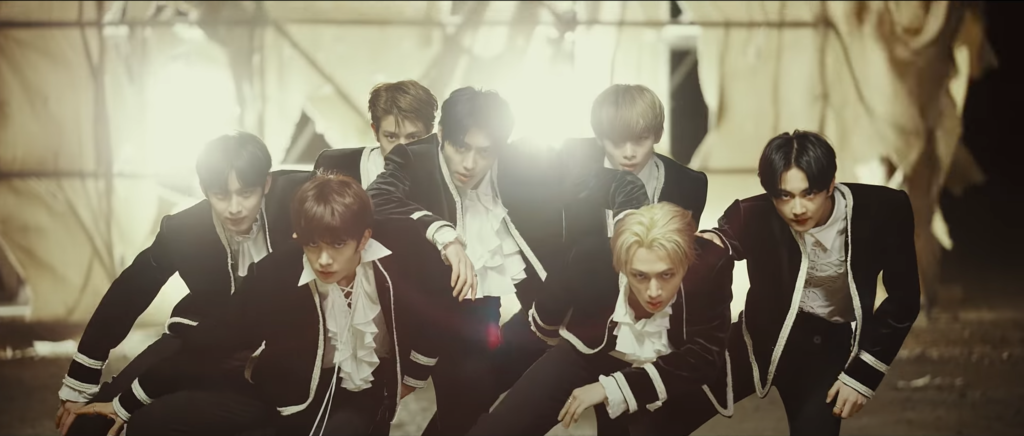
As soon as Jungwon’s incisor briefly flickers on screen, the first question is “what is happening?” and the second is “where is this concept going?” Whatever comes next for Enhypen, hopefully they can continue the compelling narrative they started and strengthen their solid position as rising K-pop rookies.
(YouTube. Images via Mnet and Belift Lab.)

